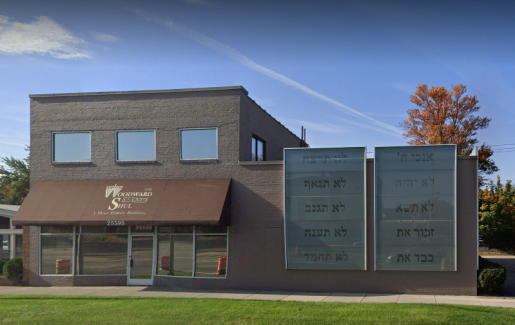Swift Recovery: Restoring a Synagogue in Time for Shabbat
A kitchen fire in a two-story synagogue caused extensive smoke damage, necessitating a rapid 48-hour restoration to ensure Friday evening services could continue. Through efficient coordination, specialized cleaning, and strategic insurance negotiations, the Globe Midwest™ team secured a settlement exceeding twice the insurer’s initial offer.
Description
A two-story synagogue, built in the 1980s, suffered a significant kitchen fire that spread dense smoke throughout its 10,000-square-foot facility, including the main sanctuary. With fewer than 48 hours to prepare for Friday evening services, building staff needed an immediate plan to tackle widespread smoke damage and ensure continuity for their congregation.
Although the flames were mostly contained to the kitchen, smoke rapidly infiltrated adjacent hallways and primary worship areas, leading to a pervasive coating of soot and lingering odor. Seating, walls, and carpets within the main sanctuary quickly absorbed the smoke, and an initial walkthrough suggested that the contamination extended well beyond any visible residue. With upcoming services just days away, the synagogue realized it would need both immediate cleanup and deeper inspection to ensure the building remained safe for congregants.
Issues
1. Extremely Tight 48-Hour Deadline
The sanctuary had to be sufficiently cleaned and deodorized by Friday evening so that regular worship services could proceed without interruption. Missing this deadline would have been deeply disruptive to the congregation.
2. Pervasive Smoke Infiltration
Smoke particles spread beyond the kitchen and threatened the overall comfort and health of anyone entering the building. Thoroughly purging odors from seating, walls, and carpets was crucial to maintaining a safe environment.
3. Coordinating Multiple Restoration Teams
Restoring the synagogue required multiple specialists to address smoke removal, content cleaning, and structural repairs, all within a tight timeframe. Without careful coordination, overlapping efforts or scheduling delays could have prevented the building from being ready for Friday services.
4. Accurately Capturing All Damages
Beyond the obvious fire damage to the kitchen, hidden smoke residue behind walls, ceilings, and in soft furnishings could lead to ongoing odor issues if not identified. Underestimating this scope would risk future repairs and out-of-pocket costs.
5. Securing Immediate Funding
Upfront resources were needed to pay for emergency services and specialized equipment. Any lag in funding approval could have delayed crucial cleaning measures, ultimately jeopardizing the tight turnaround time.
Solutions Applied
- Development of a Comprehensive Estimate
A meticulous, itemized report included both visible fire damage and harder-to-detect smoke infiltration. This holistic view ensured a sufficiently large claim that covered structural, content, and odor-remediation needs. - Streamlined Communication with Restoration Crews
Regular calls and progress updates kept ServiceMaster by Wise, Fairlane, and the building staff aligned on tasks and deadlines. This integrated approach prevented duplication of effort and kept everyone on pace. - Targeted Containment Measures
Physical barriers were erected around the gutted kitchen to confine soot and odors to the most affected zone. This allowed the sanctuary and adjoining spaces to be tackled first, enabling the congregation to return for Friday services. - Direct and Proactive Liaison with Insurance Representatives
Detailed documentation—photos, measurements, and expert evaluations—provided evidence of the kitchen loss and broader smoke contamination. Swift responses to the insurer’s inquiries helped maintain momentum and avoid funding delays. - Thorough Inspection to Uncover Hidden Smoke Damage
Specialized odor detection techniques were used to confirm how far smoke particles had migrated. This ensured the final scope addressed all areas needing attention, preventing future complications and unexpected costs. - Ensuring Replacement Cost Value (RCV) Payment
Immediate financial support needed for time-sensitive repairs and cleaning activities.
Outcome
By swiftly containing the kitchen damage and prioritizing the sanctuary’s cleanup, the synagogue was able to hold its Friday evening services on-site as scheduled—just two days after the fire. This quick turnaround preserved the congregation’s routine and avoided the complications of relocating services. Meanwhile, the overall claim ultimately settled for $282,000—well above the initial $100,000 estimate—covering both structural and content restoration. With the funding in place and a detailed plan of action, the synagogue proceeded with a full-scale repair process without incurring out-of-pocket expenses.

